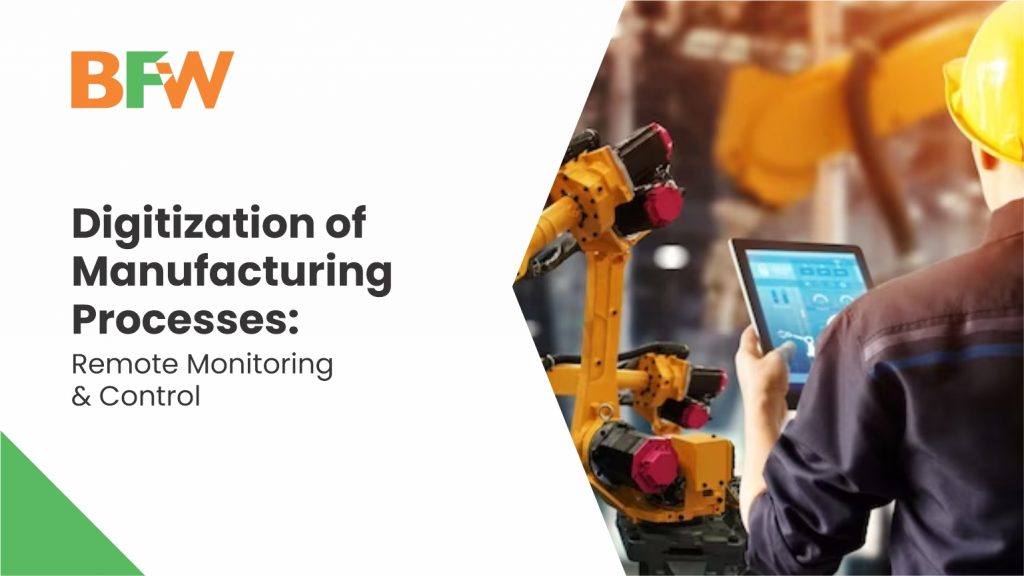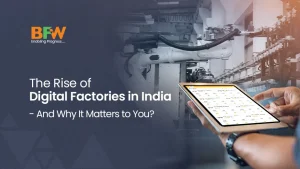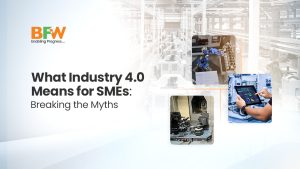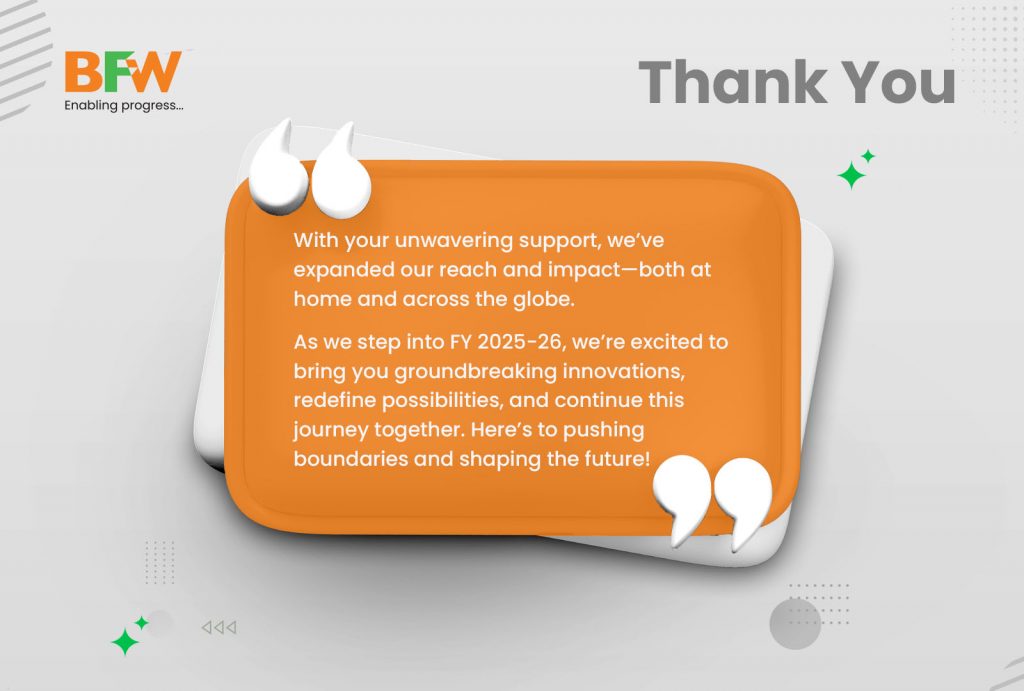Digitalisation has helped the manufacturing industry in many ways, particularly by introducing remote monitoring and control to the factory floor.
In our increasingly connected world, digitalisation is a critical factor in the success of manufacturing companies. Legacy systems of smaller-scale businesses and organisations may sustain manual dependency, but for large-scale manufacturing businesses, investing in the digital transformation of factories is imperative.
For instance, Bharat Fritz Werner (BFW) recently enhanced its production facility in Tamil Nadu to support its aspiration to triple its business growth in the next two years. The factory is now Industry 4.0-compliant and is racing further to make it completely digital.
This blog examines remote monitoring & control systems and how they transform manufacturing processes.
Machine tool industry trends and challenges
The machine tool industry is considered the ‘Mother of Manufacturing’. It is also one of the oldest industries.
Compared to sectors such as automotive, Fast Moving Consumer Goods (FMCG) with large-volume production requirements, the machine tool industry has operated more moderately. The production quantities in this sector are less extensive, making it a medium-paced moving industry.
Given the nature of the industry and lower volumes, assemblies, systems, and processes have never taken a driver seat in this industry. Hence, the prospect of digitalising systems and processes is a challenging and distant goal.
The transformation of manual systems into semi-automated or fully-automated systems, or the introduction of digitalisation, poses a challenge. In addition, changing the mindset of the working population adds more complexity to the adoption of advanced technologies in the typical framework.
What is remote monitoring and control?
Remote monitoring is the process of tracking and analysing a machine’s performance data in real-time without human intervention. The process utilises technology such as the Internet of Things (IoT) and Artificial Intelligence (AI) platforms to monitor and share data.
How does remote monitoring and control work?
Remote monitoring uses a combination of IoT and AI — IoT sensors installed in machines monitor machine functions and send that data to the AI platform for analysis. Shop floor engineers can access this real-time performance and productivity data anytime.
In addition, this process also helps predict any problems in the machine before their occurrence. This helps keep the machines working without disruptions and ensures maintenance at the right time.
Remote monitoring in industrial manufacturing use cases
Remote monitoring and control is useful in industrial manufacturing in different areas, such as for manufacturing processes, maintenance, emissions monitoring, and collision detection, among others.
- BFW subsidiary, m2nxt provides complete manufacturing execution systems through Intelligent Reliable Innovations and Seamless Solutions (IRIS). IRIS is a unified, secure, and robust solution with a cloud-based infrastructure. It provides real-time monitoring, comparison, performance optimisation, reporting, and other advanced functionalities. IRIS systems help various stakeholders, such as operators and maintenance teams, among others, to improve their respective processes.
An example: A remote collision detection system to transform real-time data into insightful solutions for industrial manufacturing
iVi is an advanced predictive system to detect collisions before occurrence and retrieve defects before damage. iVi is a device mounted on the spindle that gives real-time processed vibration data, real-time machine status, real-time processed vibration data, and more, which reduces downtime and material costs with improved reliability.
- The transformation undertaken by BFW is noteworthy, evolving from a Manufacturing Execution Software (MES) solution provider to a comprehensive Digital Operations Management system that prioritises operator friendliness. By transitioning to a Digital Operations Management system, BFW is positioning itself at the forefront of digital operations, involving a wide range of functionalities and enhancing the overall efficiency and user experience for operators within its manufacturing ecosystem.
- BFW’s IOT platform serves end-to-end manufacturing functions, including kitting, planning, manufacturing process build, traceability, genealogy and operations dashboard. This coupled with our ERP system, becomes powerful, enabling remote monitoring through digitalisation of manufacturing processes.
The benefits of remote monitoring and control
Remotely monitoring and control of industrial machines and processes has many benefits. Here are some benefits that are also the key reasons advanced manufacturers employ these smart systems.
Cost reduction
Remote monitoring reduces costs, specifically of labour and maintenance. When machines are monitored from a distance, workers require less involvement. Moreover, it provides productivity information, which can help make quick and accurate real-time decisions related to production.
Reduced human intervention
With remote monitoring, manufacturers can reduce or eliminate the need for human intervention, making the production process safer, error-free, and more cost-effective.
Increased equipment effectiveness
By tracking machines, parts, materials, and labour interventions in real-time, remote monitoring can help increase the overall effectiveness of machines and production processes.
Predict and solve problems in machines
Remote monitoring helps recognize problems that might lead a machine to break down before the problems occur. This can ensure machine maintenance at the right time and prevent expensive downtime.
Maintain machine uptime
Machine stoppage for maintenance can cost manufacturers a lot of resources and time. Instead, with remote monitoring and predictive maintenance, manufacturers can avoid unnecessary downtime and ensure machines always work smoothly.
Implementing digitalisation on the shop floor
Embracing digital transformation ensures manufacturing companies thrive in today’s ever-connected world. Integrating the latest technologies into existing production methods can not only enhance efficiency, agility, and overall profitability but also bring a positive impact on worker satisfaction. This approach opens up exciting possibilities for manufacturing companies to meet customer demands better, paving the way for continued success and growth.
Contact our experts to explore remote monitoring and control solutions for your manufacturing shop floor.










